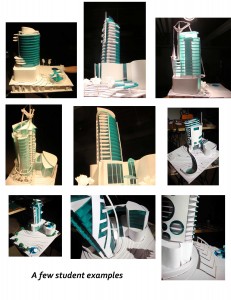People often ask, “Which university should I go to?” Obviously this is a near impossible question to answer. Any information on a particular architecture program will be out of date, because they change many personnel year by year. A big-name visiting faculty member might just walk through the studio once or twice and give a lecture or two. Does this make it a better school? What affects your experience most is your studio colleagues and the day-to-day instructors/crits. Check out articles in ‘college confidential’ –
http://www.collegeconfidential.com/college_search/
Don’t forget to read the responses to it. You can agree or disagree – I am not advocating for one point of view or another – but the criteria discussed are interesting in themselves. Remember that US applicants to US universities have access to VERY significant US scholarship money that foreign students do not. Also, that site is primarily about US institutions. Canadian Universities are somewhat more ‘egalitarian’ toward Canadian students . But internationally, the Class System is alive and well, and , my perception, on the increase. I wonder if someone has done a similar analysis on Canadian institutions?
I personally know that well-healed Asian Students desperately try for the Ivy League. I also can attest that I have seen many times how an Ivy League school on the resume can blast open career doors. Once you get through the door, it’s up to you and there may be various jealousies at play. If all other things in your nature are equal, starting higher up the ladder can affect how high and how fast you eventually rise. (Remember, I said ‘all other things being equal’). I think the phrase is “like being born on third base”.
Consider this little story– Early in my work life, I worked for an otherwise fairly average architect who had many years earlier gone to an Ivy League university. One day, he got a phone call from an alumnus: “Hey man! How ya’ doin’ these days? This year I’m editor for (insert name of very famous/prestigious architecture magazine). Have you got any projects you’d like to publish?” Result … a 10 page spread.
I am sometimes asked to supply a reference for applicants to various universities. Most of the schools ask if I went to university and to what level, etc. Harvard wanted to know if I went to Harvard.
If you are crazy for success but the Ivy-League Bachelor’s degree won’t work for your budget, then consider this route – Any Canadian University for your undergrad (get good grades, minimize drinking/partying, work on references!) -least cost for school and accommodations if you are Canadian. Then go for a masters degree, perhaps someplace more famous. Consider and compare a few bios -Abe Lincoln, George Bush, Obama. WHAT you know and WHO you know matter a lot. But WHO YOU ARE still trumps everything. Sorry, no clear answer to the question.
On “Career Success”: Ask yourself how you can improve your score on the following and also how the university you go to might affect it – Here are a famous movie mogul’s five factors for success:
1- TIMING (awareness of current events) –
2- LUCK (make many tries and remember: “Luck favors the prepared”) –
3- WHO YOU KNOW (Networking – Picasso networked, VanGogh did not) –
4- PERSEVERANCE (It’s the most important Character Trait for success) –
5- TALENT (continually polish your skills and they become talent)
